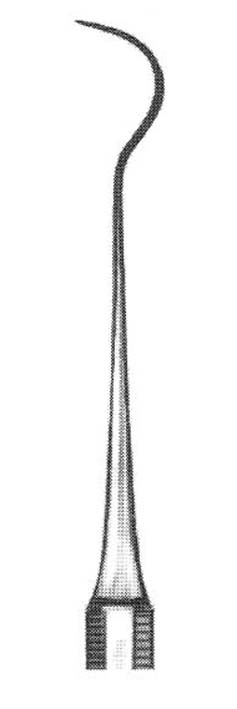PROBE, 14 cm, n°2, 335-00-02
Valid Article
PROBE
Definition
A hand-held manual dental instrument designed for tactile examination (i.e., exploration) in the oral cavity, on the tooth surface and/or gums, mainly to find indentations (e.g., pits, fissures) for the determination of early tooth decay on the crown of teeth. It is a long, slender instrument (a manual probe) with a stem that terminates in a thin working part at the distal end which may be needle-like, hooked, or blunt according to the intended use.
Synonym
Specifications
- Probe nº 2
- Made of one single piece
Instructions for use
The instruments are delivered “non-sterile”.
They mustbe used by trained, qualified personnel who respect the recommendations given in the instructions for use.
Maintenance
General recommendations
- It is recommended to reprocess instruments as soon as possible after use
- Prohibit the use of sodium hypochlorite to avoid corrosion pitting on instruments
- For all metal appliances, it is recommended to use anti-corrosion cleaning and disinfection agents.
- Do not use fixing products or hot water (> 40°C) which will cause the proteins to fix and influence the cleaning result.
- Follow the instructions and respect the concentrations and immersion times given by the manufacturer (excessive concentration can lead to corrosion or other defects on the devices)
- Perform a visual inspection to verify the cleanliness and integrity of the instruments. If necessary, repeat the reprocessing process until the instrument is visibly clean.
- It is very important to check all surgical instruments before use for visible wear or damage.
Due to the design of the product and the materials used, no limits on the maximum number of processing cycles achievable can be specified. The lifespan of medical devices is determined by their function and careful handling.





![[KSUDBDEN20-] DENTAL SET, 20 instruments](/web/image/product.template/569814/image_256/%5BKSUDBDEN20-%5D%20DENTAL%20SET%2C%2020%20instruments?unique=f6a65ab)